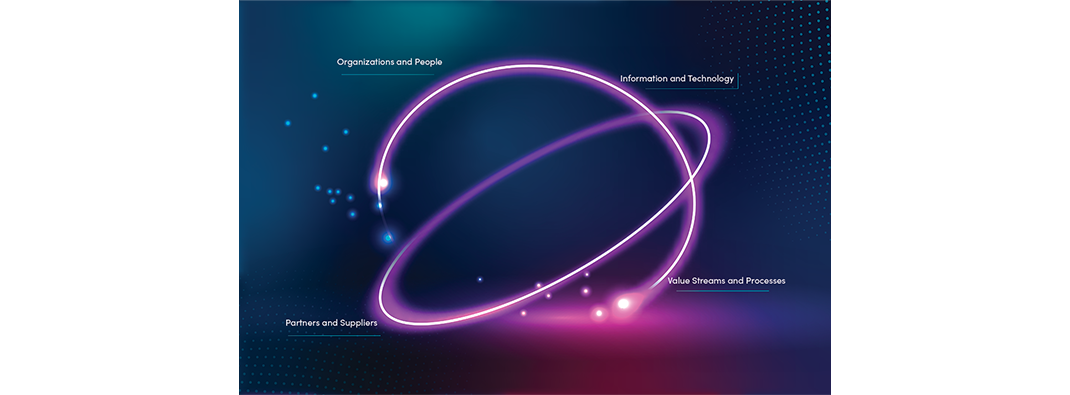
What Are the Seven ITIL 4 Practices for Service Management?
- Oct 07, 2024
- | 6
In today’s fast-paced digital world, effective service management is crucial for organizations striving to deliver high-quality services and achieve business goals. The ITIL 4 framework, which stands for Information Technology Infrastructure Library, provides a comprehensive approach to IT service management (ITSM). At the heart of ITIL 4 are seven practices that form the foundation for organizations to optimize their service management processes. In this article, we will explore these seven ITIL 4 practices in detail and how they contribute to the overall ITIL 4 Foundation key concepts and key concepts of service management.
1. Incident Management: Restoring Normal Service Operation
Incident Management is one of the core ITIL 4 practices focused on quickly restoring normal service operation while minimizing impact on the business. Incidents are unplanned interruptions or reductions in the quality of IT services. The primary goal of this practice is to resolve incidents as swiftly as possible, ensuring minimal disruption to users.
Key Components of Incident Management
-
Identification and Logging: All incidents must be logged for tracking and analysis. This includes categorizing the incident and assigning priority levels based on the impact on the business.
-
Diagnosis: The next step involves diagnosing the incident to understand its root cause. This process often involves tiered support, where simpler incidents are handled by frontline support while more complex issues are escalated.
-
Resolution and Recovery: After diagnosing the incident, the support team works on resolving it. This can involve restoring services, implementing workarounds, or providing alternative solutions.
-
Closure: Once the incident is resolved, it is important to close the incident formally, ensuring all documentation is updated and users are informed.
2. Problem Management: Identifying and Eliminating Root Causes
While Incident Management focuses on resolving incidents, Problem Management is dedicated to identifying and eliminating the root causes of recurring incidents. By addressing these root causes, organizations can prevent future disruptions and enhance service quality.
Key Components of Problem Management
-
Problem Identification: Problems are identified through various means, including trend analysis of incidents, user feedback, and proactive assessments.
-
Investigation and Diagnosis: Once a problem is identified, it is essential to conduct thorough investigations to diagnose the underlying issues. This often involves collaboration across different teams and stakeholders.
-
Workarounds: Until the root cause is resolved, temporary workarounds may be implemented to mitigate the impact of the problem on users.
-
Solution Implementation: After diagnosing the problem, a solution is developed and implemented. This may involve changes to the IT infrastructure, processes, or other elements.
-
Closure: Finally, once the problem is resolved, it should be documented, and the relevant stakeholders should be informed to prevent future occurrences.
3. Change Control: Managing Changes Effectively
Change Control is another vital practice within ITIL 4 that focuses on managing changes to IT services and infrastructure in a controlled manner. The goal is to minimize the risks associated with changes while ensuring that they deliver the desired benefits.
Key Components of Change Control
-
Change Request: Changes must be formally requested through a Change Request process, detailing the nature of the change, its impact, and the proposed implementation plan.
-
Assessment and Authorization: Each change request is assessed for its potential impact on services, and authorization is granted by the Change Advisory Board (CAB) based on risk analysis.
-
Planning and Implementation: After approval, the change is planned meticulously, including testing and rollback strategies. This ensures that any adverse effects can be mitigated during implementation.
-
Review and Closure: Post-implementation reviews are conducted to assess the success of the change and document lessons learned.
4. Service Desk: The Central Point of Contact
The Service Desk serves as the primary point of contact between users and the IT organization. This practice is critical for effective communication and coordination of IT services, ensuring that users receive timely assistance and support.
Key Components of the Service Desk
-
Single Point of Contact: The Service Desk acts as a centralized hub for all user inquiries, issues, and requests. This helps streamline communication and ensures that users can access the support they need easily.
-
Service Request Management: In addition to incident management, the Service Desk also handles service requests, such as password resets, access requests, and information inquiries.
-
User Support and Guidance: The Service Desk team provides assistance to users, helping them navigate issues and understand available services.
-
Feedback and Improvement: The Service Desk collects feedback from users, which can be invaluable for continuous improvement and enhancing service delivery.
5. Service Level Management: Ensuring Quality of Service
Service Level Management (SLM) is a practice focused on defining, negotiating, and managing service level agreements (SLAs) between the IT organization and its customers. The aim is to ensure that services meet agreed-upon quality levels and customer expectations.
Key Components of Service Level Management
-
Service Level Agreements (SLAs): SLM involves creating and managing SLAs that outline the expected level of service, including response times, availability, and performance metrics.
-
Monitoring and Reporting: Regular monitoring of service performance against SLAs is essential. This includes generating reports to assess compliance and identify areas for improvement.
-
Customer Feedback: Gathering feedback from customers regarding service performance helps SLM refine SLAs and make adjustments to better align with user needs.
-
Continuous Improvement: SLM is an ongoing process that seeks to enhance service quality and ensure alignment with business objectives.
6. Service Configuration Management: Keeping Track of IT Assets
Service Configuration Management is responsible for maintaining accurate information about the configuration of IT services and their components. This practice is essential for understanding the relationships between services, systems, and assets.
Key Components of Service Configuration Management
-
Configuration Management Database (CMDB): A CMDB is a critical component that stores information about IT assets, including hardware, software, and their relationships. Keeping this database updated ensures accurate tracking of changes and configurations.
-
Baseline Configurations: Establishing baseline configurations helps organizations understand the standard operating conditions of their services. This aids in identifying deviations and managing changes effectively.
-
Change Impact Assessment: Service Configuration Management supports change control by providing insights into the potential impact of changes on IT services and configurations.
-
Audit and Review: Regular audits of the CMDB help maintain data accuracy and integrity, ensuring that the organization has a reliable view of its IT environment.
7. Continual Improvement: Fostering a Culture of Excellence
The Continual Improvement practice is about fostering a culture of ongoing enhancement within the organization. This practice encourages teams to regularly assess and improve their processes, services, and overall performance.
Key Components of Continual Improvement
-
Improvement Objectives: Setting clear objectives for improvement initiatives helps guide efforts and measure success.
-
Assessment and Review: Regular assessments of processes and services are essential for identifying areas for improvement. This may involve feedback from users, performance metrics, and benchmarking against best practices.
-
Implementation of Improvements: After identifying improvement opportunities, organizations must implement changes and enhancements. This could involve process redesign, training, or technology upgrades.
-
Monitoring and Evaluation: Continuous monitoring of improvements ensures that they deliver the desired outcomes and allows for further adjustments if needed.
Conclusion: The Power of ITIL 4 Practices
Understanding the seven ITIL 4 practices for service management is essential for organizations looking to enhance their IT service delivery and align with business objectives. Each practice plays a vital role in achieving effective service management, from incident resolution to continual improvement. By embracing these practices, organizations can leverage the ITIL 4 Foundation key concepts and key concepts of service management to foster a culture of excellence, improve customer satisfaction, and achieve greater efficiency in their IT operations.
As IT environments continue to evolve, adopting ITIL 4 practices will empower organizations to adapt to changes, streamline processes, and ultimately provide exceptional services that meet the ever-growing demands of the digital landscape.


47.jpg)
46.jpg)
45.jpg)